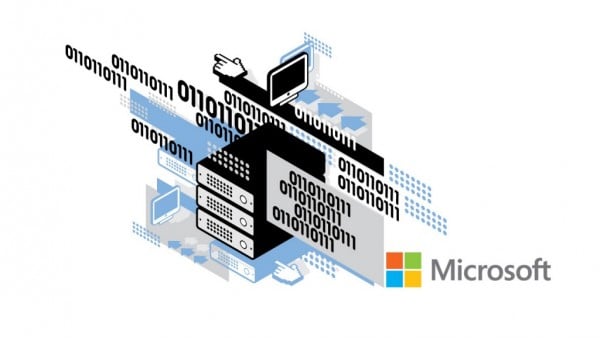Description
Installation, Storage and Compute is the first of a series of courses and exams designed to achieve the MCSA certification in Windows Server 2016. We will cover installation of Windows Server through standard manual means and image based installations discussing various requirements and different versions. In addition we will cover the multiple administrative tools that are available. Windows Server 2016 supports several types of storage and introduces new features and enhancements to features such as Storage Spaces and Data Deduplication. We will also discuss the connections of Windows Server 2016 physical and virtual machines to iSCSI and Fibre Channel SANs. Hyper-V , the virtualization platform in Windows Server 2016, has undergone various changes and enhancements such as PowerShell Direct, Nested Virtualization, and Shielded virtualization which will be discussed along with general configuration and management of virtual machines. We will also cover a new style of virtualization possible in Windows Server 2016 known as Containers. We will consider and configure various types high availability and disaster recovery that are available in Windows. In addition we will discuss the importance of patch management and monitoring and the various tools that are available in order to ensure the ongoing efficiency of Windows Server 2016.
Module 1 Installing Windows Servers in Host and Compute Environments
1.1 Course Introduction
1.2 Determining Windows Server 2016 – Part1
1.3 Determining Windows Server 2016 – Part2
1.4 Determining Windows Server 2016 – Part3
1.5 Determining Windows Server 2016 – Part4
1.6 Determining Windows Server 2016 – Part5
1.7 Installing Windows 2016 – Part1
1.8 Installing Windows 2016 – Part2
1.9 Installing Windows 2016 – Part3
1.10 Installing Windows 2016 – Part4
1.11 Installing Windows 2016 – Part5
1.12 Managing Windows Installation With Windows PowerShell
1.13 Creating Managing And Maintaining Windows Images For Deployment – Part1
1.14 Creating Managing And Maintaining Windows Images For Deployment – Part2
1.15 Creating Managing And Maintaining Windows Images For Deployment – Part3
1.16 Creating Managing And Maintaining Windows Images For Deployment – Part4
Module 2 Configure Active Directory Network for Host and Compute Environments
2.1 Overview of Active DirectoryDomain Services – Part1
2.2 Overview of Active DirectoryDomain Services – Part2
2.3 Overview of Active DirectoryDomain Services – Part3
2.4 Overview of AD DS Domain Controllers – Part1
2.5 Overview of AD DS Domain Controllers – Part2
2.6 Deploying Domain Controllers – Part1
2.7 Deploying Domain Controllers – Part2
2.8 Overview Of Group Policy Purpose Components And Processes – Part1
2.9 Overview Of Group Policy Purpose Components And Processes – Part2
2.10 Overview Of Group Policy Purpose Components And Processes – Part3
2.11 Creating And Configuring GPOs – Part1
2.12 Creating And Configuring GPOs – Part2
2.13 Security Management Using Group Policy – Part1
2.14 Security Management Using Group Policy – Part2
2.15 Security Management Using Group Policy – Part3
Module 3 Implementing Local and Enterprise Storage Solutions
3.1 Managing Disk And Volumes In Windows Server 2016 – Part1
3.2 Managing Disk And Volumes In Windows Server 2016 – Part2
3.3 Managing Disk And Volumes In Windows Server 2016 – Part3
3.4 Managing Disk And Volumes In Windows Server 2016 – Part4
3.5 Implementing And Managing Storage Spaces – Part1
3.6 Implementing And Managing Storage Spaces – Part2
3.7 Implementing And Managing Storage Spaces – Part3
3.8 Configuring Data Duplication – Part1
3.9 Configuring Data Duplication – Part2
3.10 Understanding Various Types of Storage
3.11 Comparing SAN Options – Part1
3.12 Comparing SAN Options – Part2
3.13 Understanding ISNS, DCB and MPIO
3.14 Configuring File and Folder Sharing in Windows Server – Part1
3.15 Configuring File and Folder Sharing in Windows Server – Part2
3.16 Configuring File and Folder Sharing in Windows Server – Part3
3.17 Configuring Advanced File Services With FSRM – Part1
3.18 Configuring Advanced File Services With FSRM – Part2
3.19 Configuring Advanced File Services With FSRM – Part3
Module 4 Implementing Hyper-V Virtualization and Containers
4.1 Installing Hyper-V Virtualization
4.2 Configuring Storage And Networking In Hyper-V Hosts – Part1
4.3 Configuring Storage And Networking In Hyper-V Hosts – Part2
4.4 Configuring And Managing Virtual Machines – Part1
4.5 Configuring And Managing Virtual Machines – Part2
4.6 Understanding Windows Server And Hyper-V Containers
4.7 Deploying Windows Server And Hyper-V Containers
4.8 Using Docker To Install Configure And Manage Containers
Module 5 Implementing High Availability
5.1 Overview of High Availability And Disaster Recovery – Part1
5.2 Overview of High Availability And Disaster Recovery – Part2
5.3 Implementing Network Load Balancing – Part1
5.4 Implementing Network Load Balancing – Part2
5.5 Planning And Configuring Failover Clustering – Part1
5.6 Planning And Configuring Failover Clustering – Part2
5.7 Planning And Configuring Failover Clustering – Part3
5.8 Managing A Failover Cluster
5.9 Integrating Failover Clustering and Hyper-V – Part1
5.10 Integrating Failover Clustering and Hyper-V – Part2
5.11 Configuring Site Availability
Module 6 Maintaining and Monitoring Server Environments
6.1 Windows Server Update Services – Part1
6.2 Windows Server Update Services – Part2
6.3 Windows PowerShell Desired State Configuration
6.4 Windows Server 2016 Monitoring Tools – Part1
6.5 Windows Server 2016 Monitoring Tools – Part2
6.6 Conclusion


